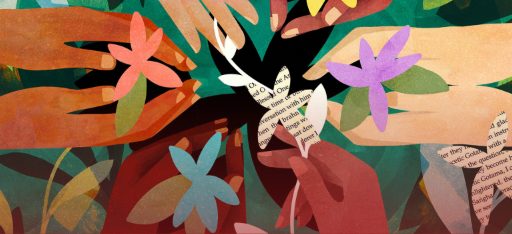
Threads of Faith, Colors of Art: Weaving Resilience in Times of Crisis in Lebanon
Kulturnest is happy and grateful to Dr. Mitri Raheb, Dar al-Kalima University, and CAFCAW for inviting our co-founder, Dr. Pamela Chrabieh, to the Hannover, Germany, roundtable on the role of religion and the arts in community resilience. In a region where crises overlap and grief keeps returning, the conversation felt urgently necessary: faith as an ethic of steadfast care; art as oxygen that gives chaos a form we can hold; solidarity as daily practice, not slogan.
In her talk, “Threads of Faith, Colors of Art: Weaving Resilience in Times of Crisis in Lebanon” (Oct 18, 2025), Dr. Chrabieh shared how, at Kulturnest and across Lebanon, artists keep doors open, hold exhibitions under blackouts, build affordable editions, and lean on diaspora links, showing resilience as the work of making meaning, repairing ties, and beginning again. We thank the organizers for a space where artists, scholars, and cultural workers spoke frankly, shared tools, and imagined actionable paths across borders and disciplines. We leave with simple commitments that matter: keep the doors open, keep the dialogue alive, keep making.
Dr. Chrabieh's Speech Summary:
Speaking from Kulturnest in Lebanon amid ongoing war and economic collapse, Dr. Chrabieh argues that two threads keep society from tearing: faith (as an ethic of steadfast care and responsibility, beyond mere feeling) and art (not a luxury but “oxygen” that steadies, gathers, and gives form to chaos). Kulturnest embodies this through hybrid exhibitions, markets, readings, and workshops—often continuing under blackout and bombardment—while enabling affordable editions, community rituals, and diasporic support. Across Lebanon, despite a weak market, artistic activity flourishes through pop-ups, shared costs, open studios, residencies, and women-led micro-infrastructures that carry community when the economy cannot. This, she says, is resilience: making meaning when it breaks, repairing ties, and beginning again. She calls for treating culture as infrastructure (light, stabilizing partnerships; basic legal protection; practical incentives), and proposes immediate, grassroots tools: diaspora patron circles, edition strategies, shared logistics and co-op shipping, stronger hybrid presence, and formalized solidarity (time-banking, gear co-insurance, shared fabrication corners, rotating mentorship). The closing note: keep multiplying small faithful acts—faith and art in the same room—so truth can be told, justice pursued, and a future imagined.
To see these threads on the ground, our hybrid collective exhibition “Aftermaths” is on view at Kulturnest (Lebanon) and online until November 27, 2025.



